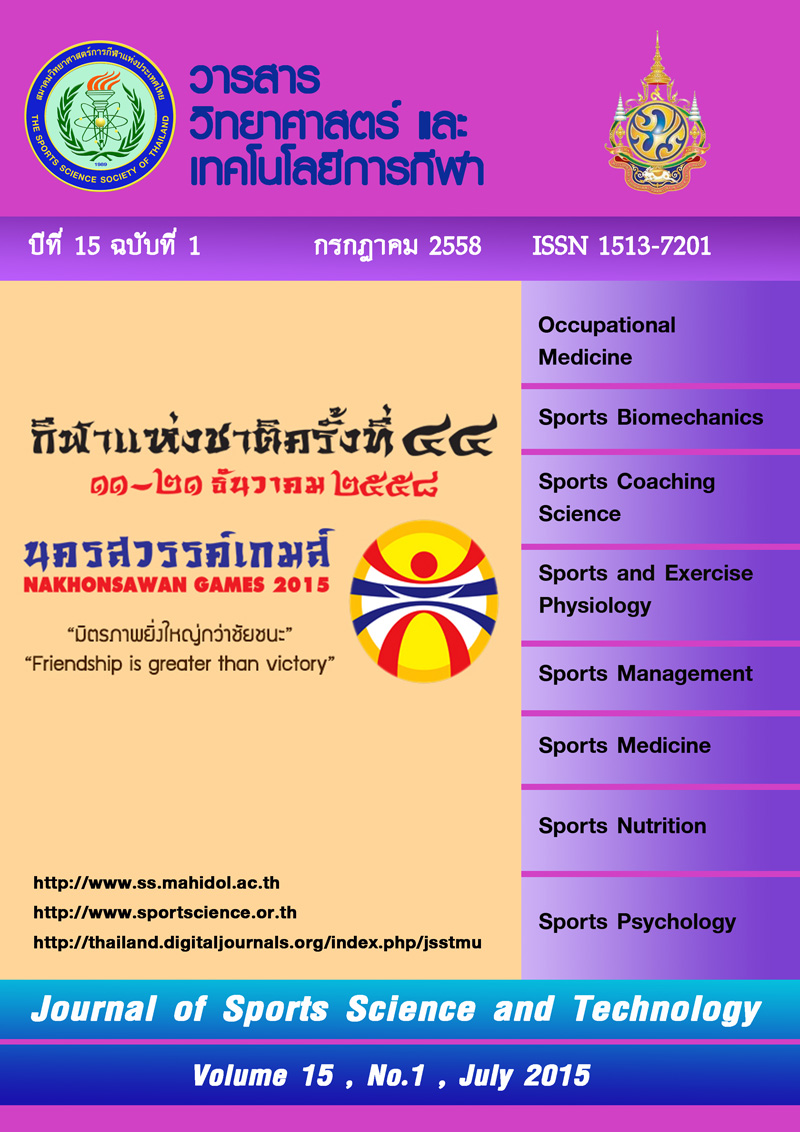THREE-DIMENSIONAL ANALYSIS OF BALANCE CONTROL DURING BASIC ROTATION IN RHYTHMIC GYMNASTICS
Keywords:
, Rotation axis, Rhythmic Gymnastics, rotations, balance controlAbstract
In Rhythmic Gymnastics (RG), the rotation is a part of the body difficulties (Posture in RG). The Rotation Difficulties are used in the most elements of the movement which have the highest scores. In addition, rotation in RG consists of single and multiple pivots. However, Pivot analysis in RG has less information. Nevertheless, a biomechanics research in Thailand about 3D of basic RG rotation has not been studied yet. The purpose of this study was to investigate the different maintaining balance and stability control during basic rotation in RG. Seven healthy female rhythmic gymnasts in the Thai National team (age18.43± 3.78; height 162.71±5.70 cm; body fat 14.75± 3.93) who had performed rhythmic gymnastics for 12.14 ± 4.81 years participated in this study. All gymnasts preferred the three basic rhythmic gymnastics rotations such as: Free leg front straight rotation 1 round (R1), Passé Pivot 2 rounds (R2) and Multiple Pivots (R1+2) in the counterclockwise direction with the left leg being the supporting leg, which this study used. Ten optoelectronics BTS cameras sampling frequency of 100 Hz and two Force plates sampling frequency of 800 Hz were used to collect data. Wilcoxon matched-pairs signed rank test showed significant differences between single pivot and multiple pivots, it demonstrated the center of mass and center of pressure inclination angles wider when the gymnasts perform multiple pivots and increasing rotation cycles. It is expected that it was a result from multiple pivots is difficult to maintaining balance and stability control than single pivot, the center of mass and center of pressure inclination angles wider affected to the increasing rotation cycles. This may indicate the gymnasts should be emphasized in improvement of core stability training in order to increase rotation cycles. Moreover, ballet training can help the gymnasts to maintain the dynamic balance during rotation.
(Journal of Sports Science and Technology 2015;15(1): 27-34 )






